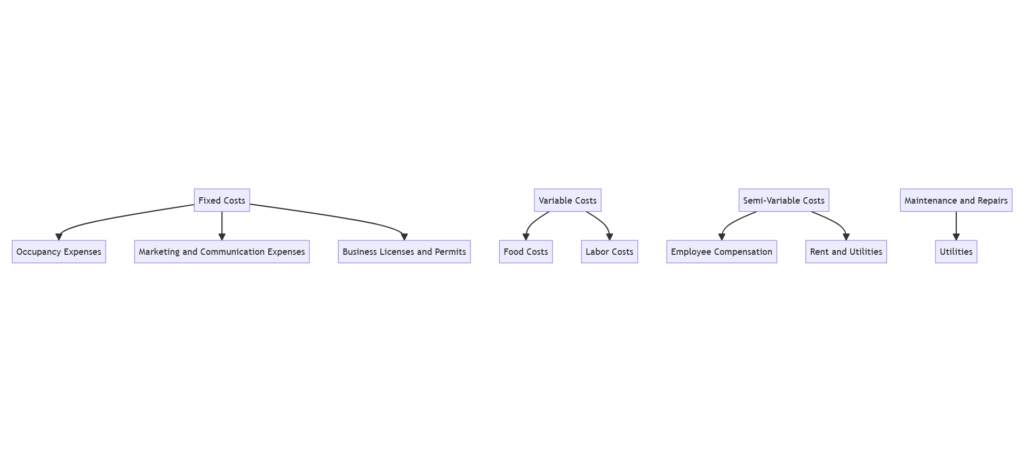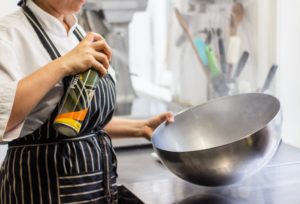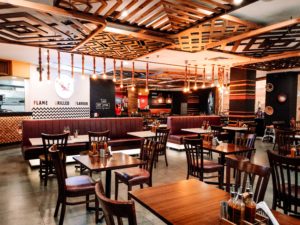Understanding Restaurant Operating Costs Breakdown
As a restaurant owner, having a deep understanding of the intricacies of operating costs is not just important; it’s vital for the success and profitability of your establishment. Operating costs play a pivotal role in shaping your business’s financial health and determining its competitiveness in the market. By gaining a comprehensive understanding restaurant operating costs breakdown and how they impact your bottom line, you can make well-informed decisions that set you apart from your competitors. In this article, we will delve into the different categories of restaurant operating costs, including fixed costs, variable costs, and semi-variable costs, providing you with a thorough breakdown that can optimize your financial management and help you prosper.

Exploring Fixed Costs
Fixed costs serve as the foundation of your restaurant’s financial stability. These are the expenses that remain constant, regardless of fluctuations in your sales volume. As a restaurant owner, you must ensure that these costs are covered, irrespective of how busy or slow your establishment may be. The primary fixed costs include occupancy expenses, marketing and communication expenses, and business licenses and permits.
Occupancy Expenses: The rent or mortgage payments you make to secure the physical space for your restaurant fall under occupancy expenses. These costs are crucial as they provide you with the foundation to run your restaurant, regardless of the number of customers you serve.
Marketing and Communication Expenses: Effective promotion is a cornerstone of attracting customers to your restaurant. However, marketing and communication expenses, such as advertising and promotional materials, remain relatively stable even when your sales fluctuate, making them fixed costs.
Business Licenses and Permits: Obtaining the necessary licenses and permits to operate legally is a fixed cost that you need to consider as part of your restaurant’s operational expenses. Compliance with legal requirements is crucial for a successful and sustainable business.
Understanding Variable Costs
Variable costs are the dynamic aspect of your restaurant’s expenses. These costs are directly linked to your sales volume and can fluctuate based on production levels. For restaurants, the most significant variable costs revolve around food and labour, and managing them effectively is essential for optimizing your profitability.
Food Costs: As a restaurant, your food costs are one of the most influential variables impacting your bottom line. Fluctuations in food prices can substantially impact your profitability, making it imperative to establish efficient supply chain management and negotiate competitive pricing from suppliers.
Labour Costs: Your labour costs represent another major variable expense for your restaurant. The number of employees you need and their working hours will depend on your sales and customer traffic. To optimize labour costs, consider employing labour management systems and creating schedules that align with your peak business hours.

Breakdown of Variable Costs
Variable costs are expenses that change based on the volume of sales and are directly tied to your restaurant’s production levels. For a restaurant, the most significant variable costs are related to food and labour. Understanding and managing these costs is essential for optimizing your restaurant’s profitability.
– Food Costs:
As a restaurant, the cost of food is one of the most influential variables in your profitability. Fluctuations in food prices can significantly impact your bottom line, so it’s crucial to establish efficient supply chain management and seek competitive pricing from suppliers.
– Labor Costs:
Labour costs are another major variable expense for restaurants. The number of employees needed and their working hours will depend on your restaurant’s sales and customer traffic. To optimize labour costs, consider employing labour management systems and schedules that align with peak business hours.
Deciphering Semi-Variable Costs
Semi-variable costs, also known as mixed costs, consist of both fixed and variable components. These costs are associated with producing a product or service and may increase based on volume. Some examples of semi-variable costs include:
– Employee Compensation:
Certain employees, like sales representatives or servers, might earn a base salary (fixed) along with a commission (variable) based on their performance.
– Rent and Utilities:
In a leased-space situation, the rent is typically a fixed cost. However, utility expenses, such as electricity and gas, may increase during peak operational hours, making them semi-variable costs. Estimating these expenses beforehand will help you better manage your budget.
Navigating Hidden Costs
Apart from the primary operating costs mentioned above, there are hidden costs that restaurant owners should be aware of and budget for in advance. These costs include:
– Maintenance and Repairs:
Equipment maintenance and repairs can be expensive but are necessary to keep your restaurant running smoothly. Setting aside a budget for these costs can help you avoid unexpected financial burdens.
Conclusion
In conclusion, managing restaurant operating costs breakdown effectively is a key factor in the long-term success and profitability of your establishment. Understanding the distinction between fixed, variable, and semi-variable costs empowers you to make informed decisions about pricing, menu offerings, and staffing, ultimately leading to a more successful restaurant.

Frequently Asked Questions and Answers
What costs are involved in running a restaurant?
- Running a restaurant involves various costs that are crucial for its day-to-day operations and overall success. The main costs include:
- Food Costs: This comprises the expenses associated with purchasing raw ingredients and food items necessary to prepare dishes for your menu.
- Labour Costs: These are the expenses related to paying your staff, including chefs, servers, bartenders, and other employees involved in running the restaurant.
- Rent or Mortgage Payments: The cost of occupying the physical space where your restaurant operates is a significant expense.
- Utilities: This includes electricity, gas, water, and other essential services required to keep the restaurant functioning.
- Marketing and Advertising: Promotional activities to attract customers and build brand awareness require budget allocation.
- Insurance: Restaurant owners need insurance coverage to protect against potential risks and liabilities.
- Equipment and Supplies: Purchasing and maintaining kitchen equipment, utensils, and other supplies essential for restaurant operations is a considerable cost.
- Licenses and Permits: Acquiring the necessary licenses and permits to operate legally is essential and involves costs.
- Maintenance and Repairs: Regular maintenance and occasional repairs of equipment and facilities are necessary but come with associated expenses.
- Administrative Expenses: This includes costs related to accounting, payroll, and other administrative tasks.
How do you calculate operating costs for a restaurant?
- To calculate the operating costs for a restaurant, follow these steps:
- Identify the Cost Categories: Divide the expenses into fixed, variable, and semi-variable costs. Fixed costs remain constant, variable costs change with sales volume, and semi-variable costs have both fixed and variable components.
- Gather Financial Data: Collect all financial records and receipts related to expenses over a specific period, typically a month or a year.
- Sum Up Fixed Costs: Add all the fixed costs, such as rent, insurance, licenses, and administrative expenses.
- Determine Variable Costs: Calculate the total variable costs, including food, beverages, and labour, based on the sales volume during the selected period.
- Calculate Semi-Variable Costs: For semi-variable costs, identify the fixed and variable portions and add them up accordingly.
- Add Up All Costs: Sum up the fixed, variable, and semi-variable costs to get the total operating costs for the chosen period.
What are the two largest operating costs of a restaurant?
The two largest operating costs of a restaurant are typical:
- Food Costs: The expenses associated with purchasing raw ingredients and food items to prepare dishes for customers can be a significant portion of a restaurant’s operating costs.
- Labour Costs: Payroll expenses for employees, including chefs, servers, bartenders, and other staff, can often be one of the most substantial operating costs for a restaurant.
What is the highest cost of operating a restaurant?
- The highest cost of operating a restaurant can vary depending on factors such as location, restaurant size, concept, and management. However, in most cases, labour costs tend to be the highest operating cost for restaurants. Paying wages to employees is essential for maintaining quality service and efficient kitchen operations. To manage this cost, restaurant owners often focus on optimizing staff scheduling, training, and performance to ensure productivity while controlling expenses.

